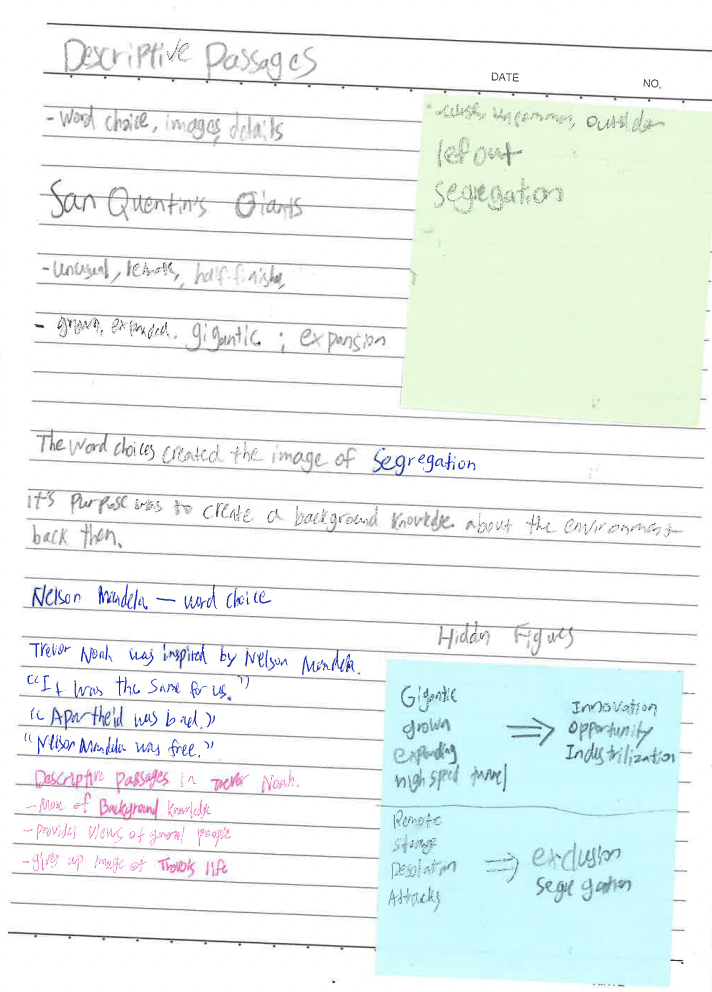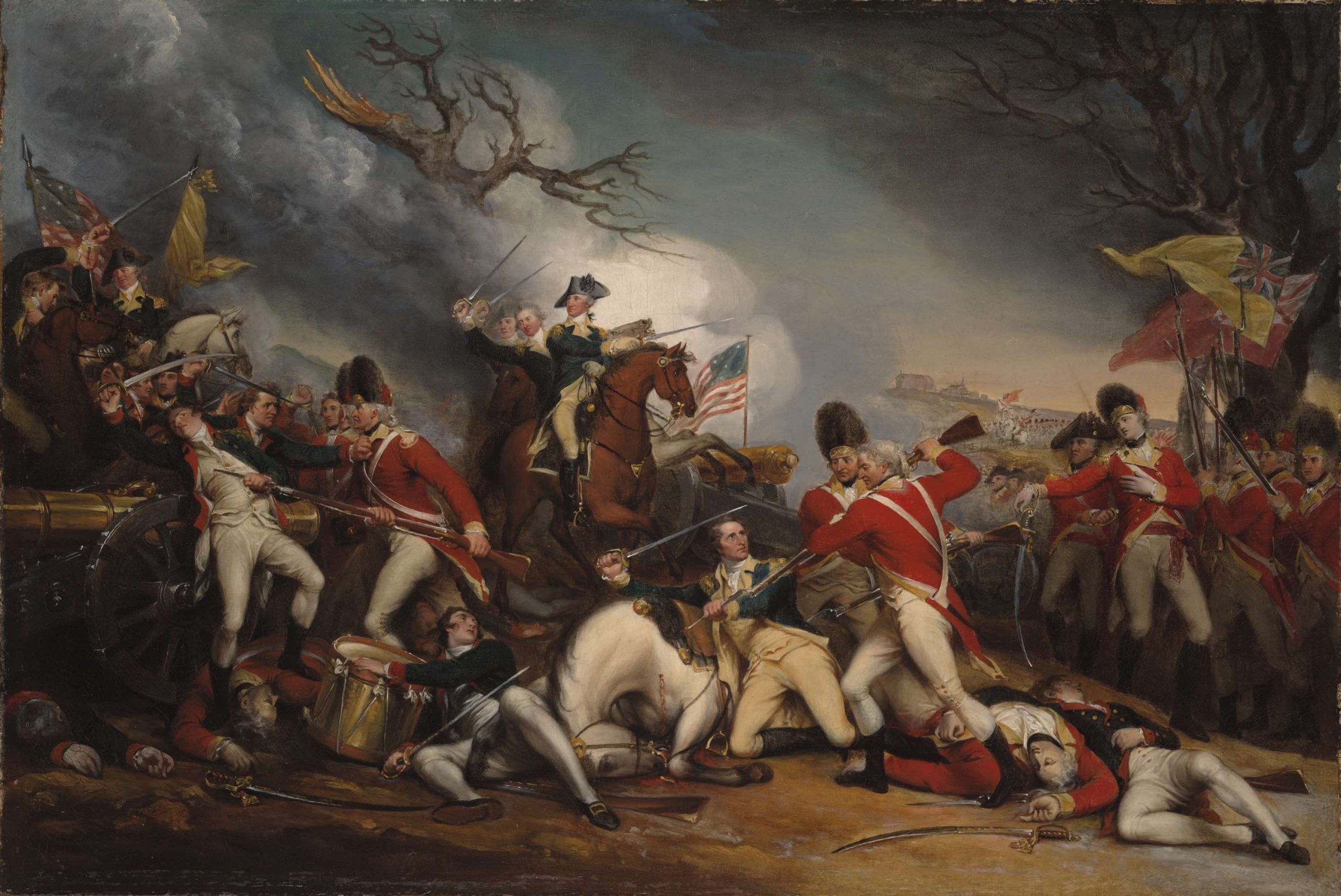It’s Trevor Noah: Born a Crime by Trevor Noah tells the experience and the challenges Trevor faces because of his race. He was born a mixed child, his mother being a black women and his father being a white man. He tells his personal story and the injustice he faced while growing up as a half black, half white child in South Africa under and after Apartheid. During Trevor’s lifetime, black and white people were not able to have relationships with each other due to the regulations of Apartheid. Trevor Noah was born a crime. It is a compelling story of a young boy growing up in a harsh environment. If you have a chance to read this book, I would recommend it.
During Humanities class, we also dealt with the story called Hidden figures via read aloud, short clips and more. It present a social issue of racism, segregation, opportunity and much more. My notebook will contain not only the analysis of my own book club book, but also the class example Hidden Figures.
Identifying Central ideas:

 It’s Trevor Noah
It’s Trevor Noah
A prominent central idea in the book is the impact of apartheid on Trevor Noah’s life. Being born to a black mother and white father during a time when mixed-race relationships were illegal, Noah was considered a “crime” under apartheid laws. His experiences highlight the absurdity and cruelty of racial segregation, and he reflects on the complexities of racial identity and its influence on one’s sense of belonging.
Throughout the book, Noah depicts the harsh realities of poverty and the stark socioeconomic disparities in South Africa. He discusses the challenges faced by families living in poverty, the impact of limited resources on education, and the systemic barriers that perpetuate inequality.
Hidden Figures
In the short video clip, a white women tried to move a black women to another place. In the process, many people were staring at her and people were whispering “We don’t want any trouble in here” showing the assumptions she was made of people because of her identity and her race. Everyone deserves equal chances and opportunities.
Connections between the stories
The two stories deals with a similar central idea and theme that allows the readers to make connections with each other.
Both stories depict individuals who face significant challenges and obstacles in their respective contexts. Trevor Noah’s memoir explores his experiences growing up during apartheid in South Africa, navigating racial divisions and societal prejudices. Similarly, “Hidden Figures” tells the story of African-American women mathematicians working at NASA during the racially segregated 1960s, overcoming discrimination and gender bias. Both narratives highlight the resilience, determination, and courage of individuals who rise above adversity.
Pay Attention to Narrative + Informational
 Trevor Noah
Trevor Noah
The book provides insights into the apartheid laws that were enforced in South Africa during the time of Noah’s upbringing. It explains the racial segregation policies, the Immorality Act that made interracial relationships illegal, and the implications of being born to mixed-race parents. Noah also discusses the education system in South Africa, highlighting the disparities and challenges faced by students from disadvantaged backgrounds. He shares anecdotes about his experiences in various schools, the influence of teachers, and the impact of limited resources on education quality.
Noah presents the narrative through a series of vivid anecdotes and personal stories from his childhood and adolescence. These stories provide specific examples that illustrate the broader themes and issues he addresses throughout the book.
Hidden figures
The narrative and the informational provides historical context by delving into the racial segregation and gender biases prevalent in the United States during the 1960s. It explores the challenges and limited opportunities faced by African-Americans, particularly African-American women
-East side of Langely university
-work dedicated based on merit
-Favoritism + social Hierarchy
Discover and Analyze Implicit Argument
 Trevor Noah
Trevor Noah
Throughout the memoir, Noah highlights the absurdity and injustice of apartheid while emphasizing the importance of resilience, empathy, and understanding.
One smaller idea connected to the main theme is the exploration of identity and belonging. Noah grapples with his mixed-race heritage, feeling like an outsider in both the black and white communities. He navigates the complexities of racial classification, constantly adapting his identity to fit into different social contexts. This exploration of identity reveals the arbitrary nature of racial divisions and challenges the notion of predefined categories.
Hidden figures
“Sometimes when the environment is corrupt, the brave people stand up”
“Her small act of defiance made them all feel a bit anxious but also empowered.”
Racism, Sexism, Innovation, Identity, Opportunities
Defeat Germany
-secrecy, secluded, misunderstood, excluded
-Mustang (Best plane)
Descriptive passages
 Hidden Figures
Hidden Figures
Gigantic, grown, expanding, high speed tunnel –> Innovation, Opportunity, Industrialization
Remote, Strange, Desolation, Attacks –> Exclusion, Segregation
Trevor Noah


 It’s Trevor Noah
It’s Trevor Noah Trevor Noah
Trevor Noah Trevor Noah
Trevor Noah Hidden Figures
Hidden Figures
Recent Comments